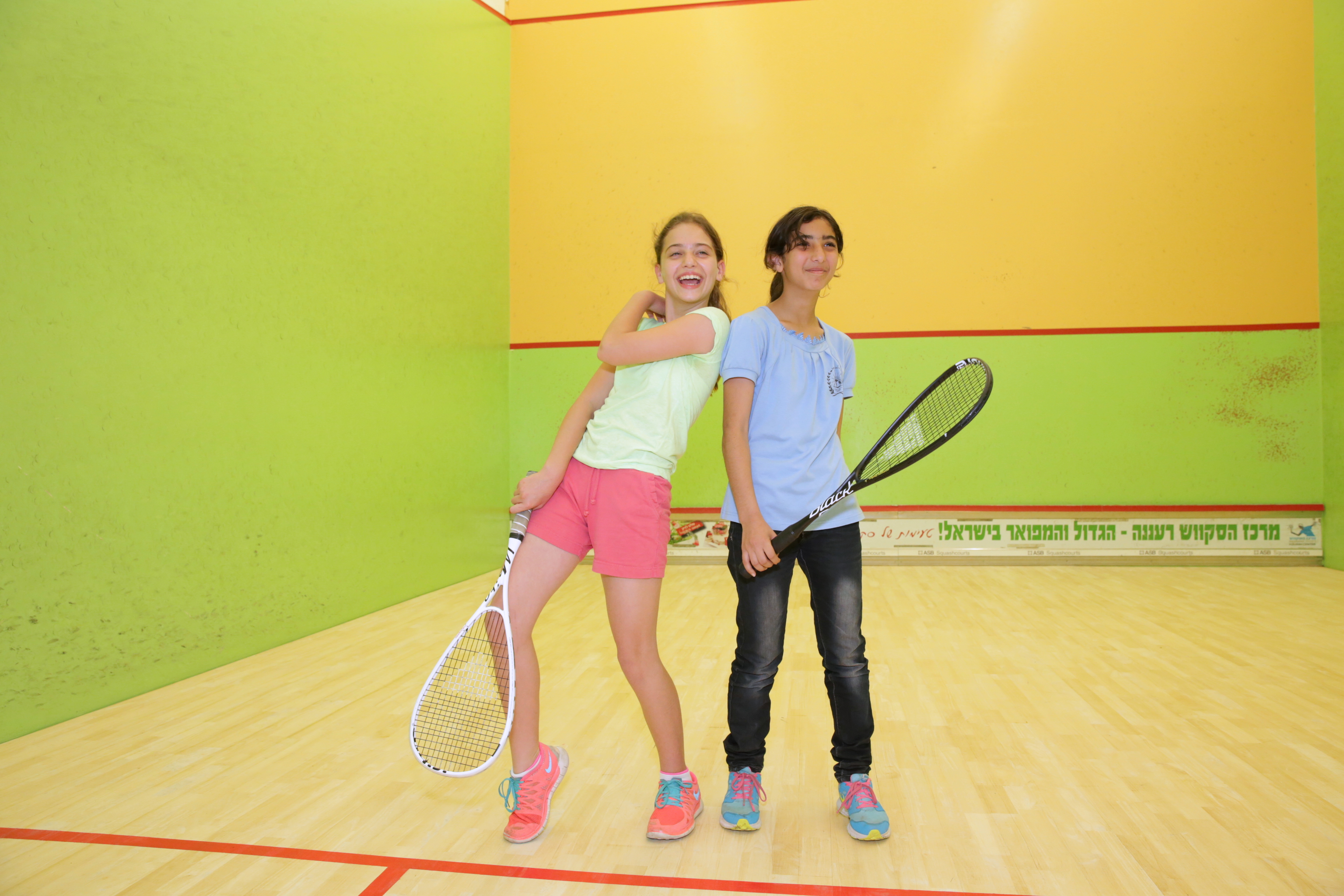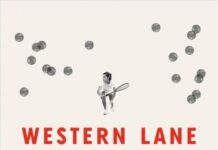By James Zug

It sounds deceptively simple. Put two kids in a squash court and let them play.
Nothing is simple in Israel. History, religion, politics impinge—disruptively—on every aspect of life.
“Back in 2012, I was talking with Variv Bloomberg at a tournament and we got the idea of trying to help kids in Israel,” said Hillel Bloomberg, the founder of SquashBond, Israel’s urban squash program. “The idea was that if you can get them to come together in some way through sports, this would help promote coexistence and integration.”
It is a sign of the profound separation of communities in Israel and the intractable, seemingly permanent nature of that separation that SquashBond has such modest goals.
The other urban squash programs, particularly the twenty programs that make up the National Urban Squash & Education Association, seek to uplift underserved children. In America, it is not about race. This struck me powerfully in the winter of 1997 when I visited the first class at the fledgling SquashBusters program in Boston. I had naively imagined the program was focused on African American children. After spending a couple of days with Greg Zaff and toured the schools and went to practices, I saw it was about economics. Those who didn’t have opportunities were getting opportunities. I met kids of every shade of color and background. The range of hyphenation was startling: Caribbean-American, Mexican-American, Puerto Rican.
SquashBond is explicitly about religion. It is a program involving Jews from Ra’anana and Muslims from Al Zahara Junior School in Tira, an Arab town twenty minutes to the north of Ra’anana. (Ra’anana is a northern suburb of Tel Aviv.) Both groups are middle-class. A third segment in the future involves Ethiopian Jews. The largest Ethiopian Jewish settlement in the country is about a half hour from the squash club and many Ethiopians there would be considered living below the poverty line.
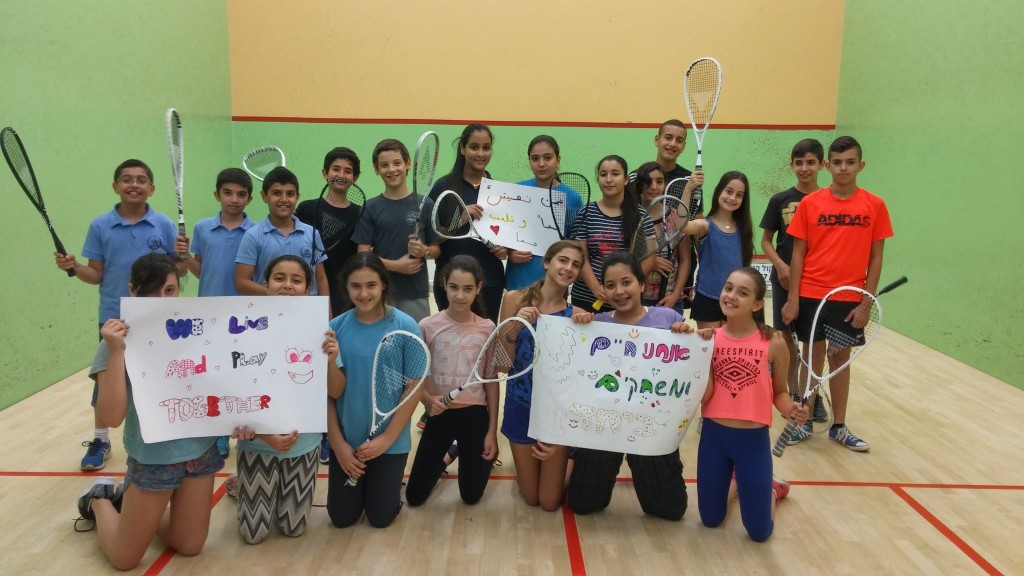
The program started in November 2013 with forty children. It uses the eight-court facility at the Ra’anana Squash Center, the largest squash club in the country. During the first year, the program was just one hour once a week; the second year it expanded to two days a week, doubled the hours and brought in conversational English academics.
Instead of the typical classroom tutoring, though, SquashBond devotes half of each practice to group dynamics: games meant to stimulate discussions and conversations—students are forced to work together.
“Some Arab children don’t speak Hebrew well, especially when they are young, and almost all the Jewish children don’t speak Arabic,” Nitzan Moree, SquashBond’s executive director, told me when I visited the program this autumn. “Both groups study English but often aren’t too good at that as well. This is a real symbol of the problems we have in the country—we literally can’t talk to each other. So the group dynamics and the conversational English classes instill common values and helps them relate to each other.”
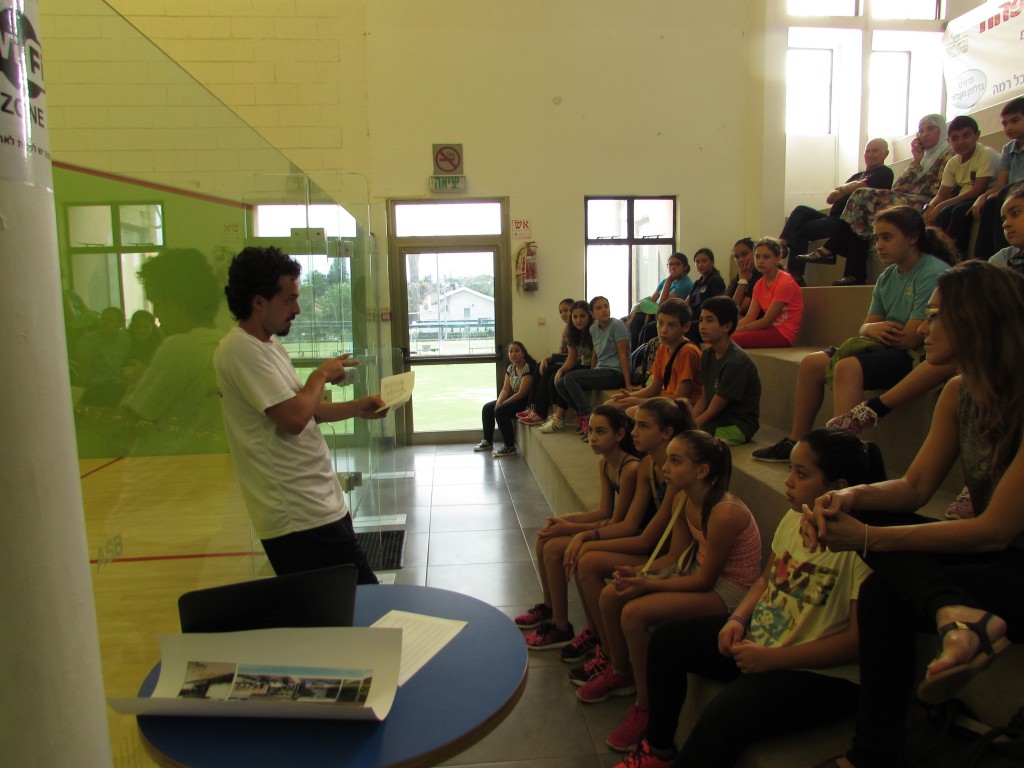
The team behind SquashBond includes a number of Israeli squash leaders and Maccabiah athletes. Moree, a former member of the Israeli national junior team, is also a teaching pro at Ra’anana. Bloomberg emigrated from South Africa in 1975 and for forty years managed squash clubs and helped found and lead the Israel Squash Association. They formed an official non-profit organization to operate SquashBond.
“We faced opposition from the parents on both sides at the start,” Bloomberg said. “They live separate lives, separate schools, separate neighborhoods. But this was the idea, just let the kids meet each other. Let the kids have a dialogue between them. It turned out it was like meeting someone from the other side of the ocean. In the beginning, you’d have the Arab kids sitting here, the Jewish kids there. But after a while, they were sitting together, mixing, no animosity, no distancing. It is people-to-people.”
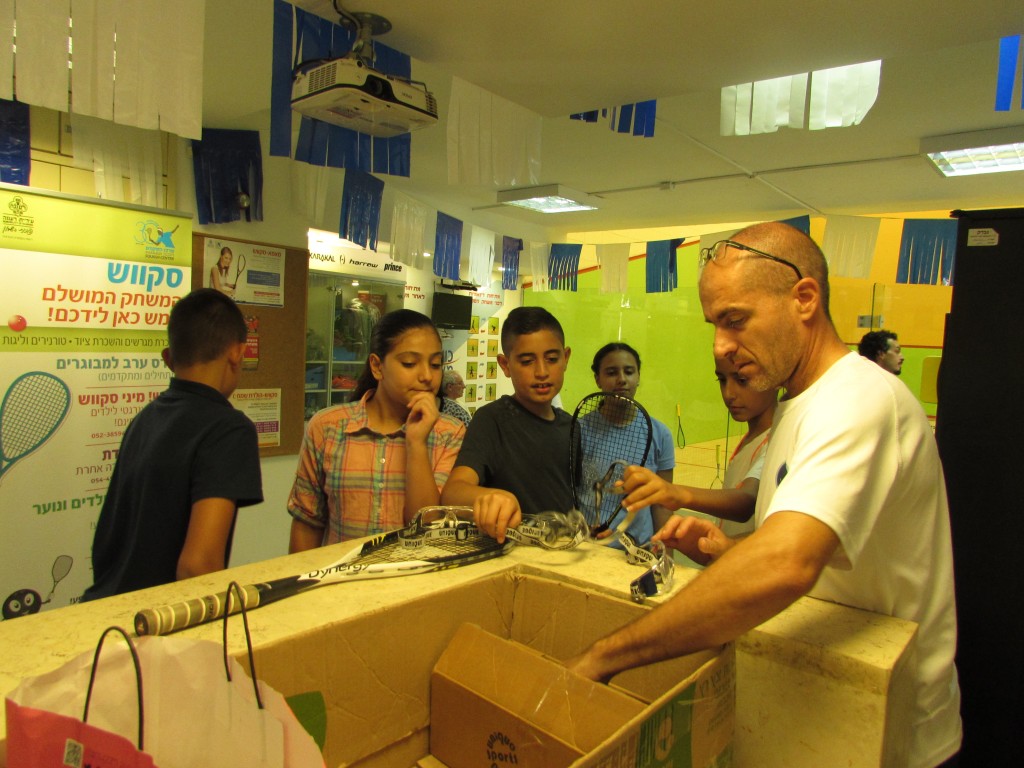
At the final practice of the year, all the parents came and there was a tremendous mixture of people, Moree said. Each year the students pay 75 shekels and a 150 shekel entrance fee. Each practice includes a hot meal. The total budget is about $60,000 a year.
Now in its third year, SquashBond has added more eleven year-olds and beginning to send students to local tournaments. There is a waiting list of more than a hundred children. “It is entirely by word-of-mouth,” said Bloomberg. “There isn’t one Arab town or village in Israel or the West Bank that has a squash court. The project is amazing. It is win-win for everyone. On the court players learn to give space, opportunity and respect to each other during a squash match and then that spills over to off the court. That is where the name comes from, using squash to bond the children together.”
“Squash is a sport for every moment and everywhere,” said Samar Haskaya, an eleven-year-old SquashBonder. “We have gained incredible insights and above all the value of coexistence.”


